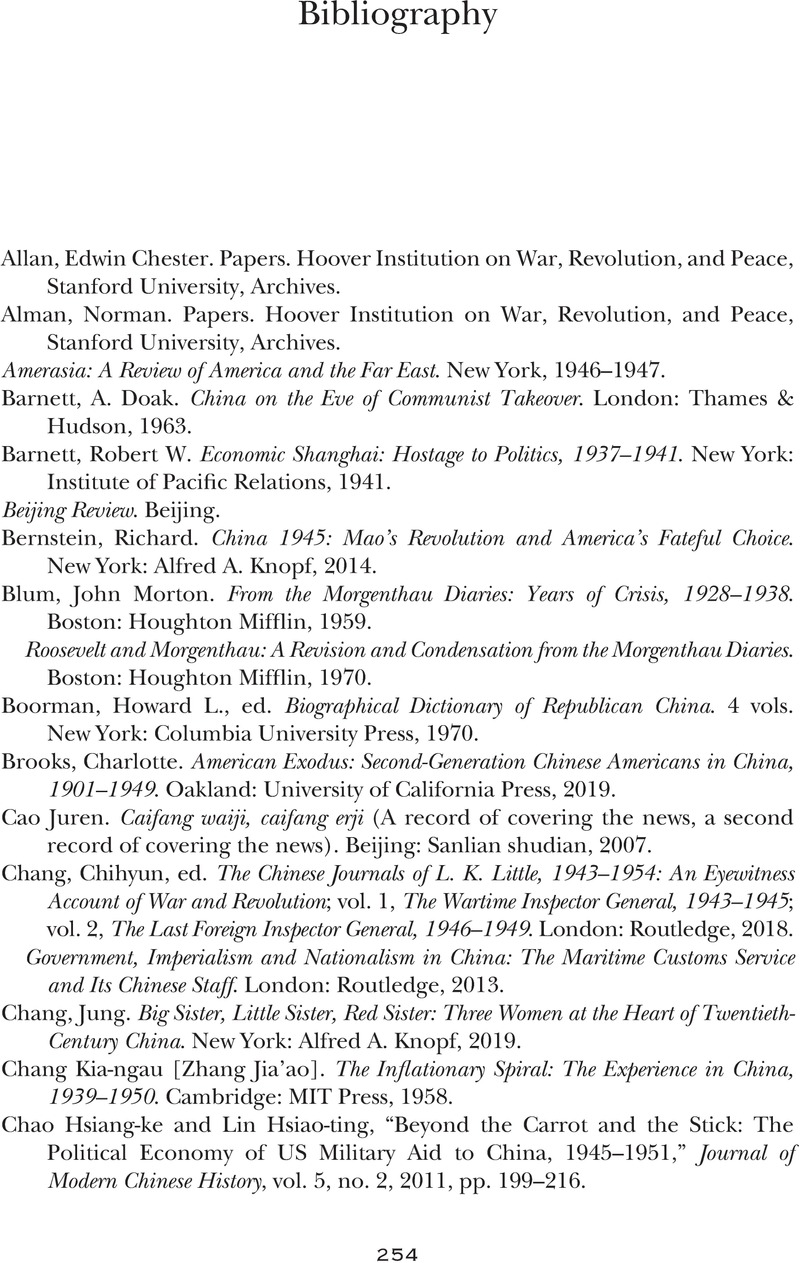Book contents
- The Collapse of Nationalist China
- The Collapse of Nationalist China
- Copyright page
- Contents
- Figures
- Acknowledgments
- Introduction
- Chapter 1 Ichigo and Its Aftermath
- Chapter 2 Hyperinflation and the Rivalry between T. V. Soong and H. H. Kung
- Chapter 3 Sudden Surrender and Botched Liberation
- Chapter 4 1946
- Chapter 5 1947
- Chapter 6 1948
- Conclusion
- Glossary
- Notes
- Bibliography
- Index
- References
Bibliography
Published online by Cambridge University Press: 10 March 2023
- The Collapse of Nationalist China
- The Collapse of Nationalist China
- Copyright page
- Contents
- Figures
- Acknowledgments
- Introduction
- Chapter 1 Ichigo and Its Aftermath
- Chapter 2 Hyperinflation and the Rivalry between T. V. Soong and H. H. Kung
- Chapter 3 Sudden Surrender and Botched Liberation
- Chapter 4 1946
- Chapter 5 1947
- Chapter 6 1948
- Conclusion
- Glossary
- Notes
- Bibliography
- Index
- References
Summary

- Type
- Chapter
- Information
- The Collapse of Nationalist ChinaHow Chiang Kai-shek Lost China's Civil War, pp. 254 - 264Publisher: Cambridge University PressPrint publication year: 2023



